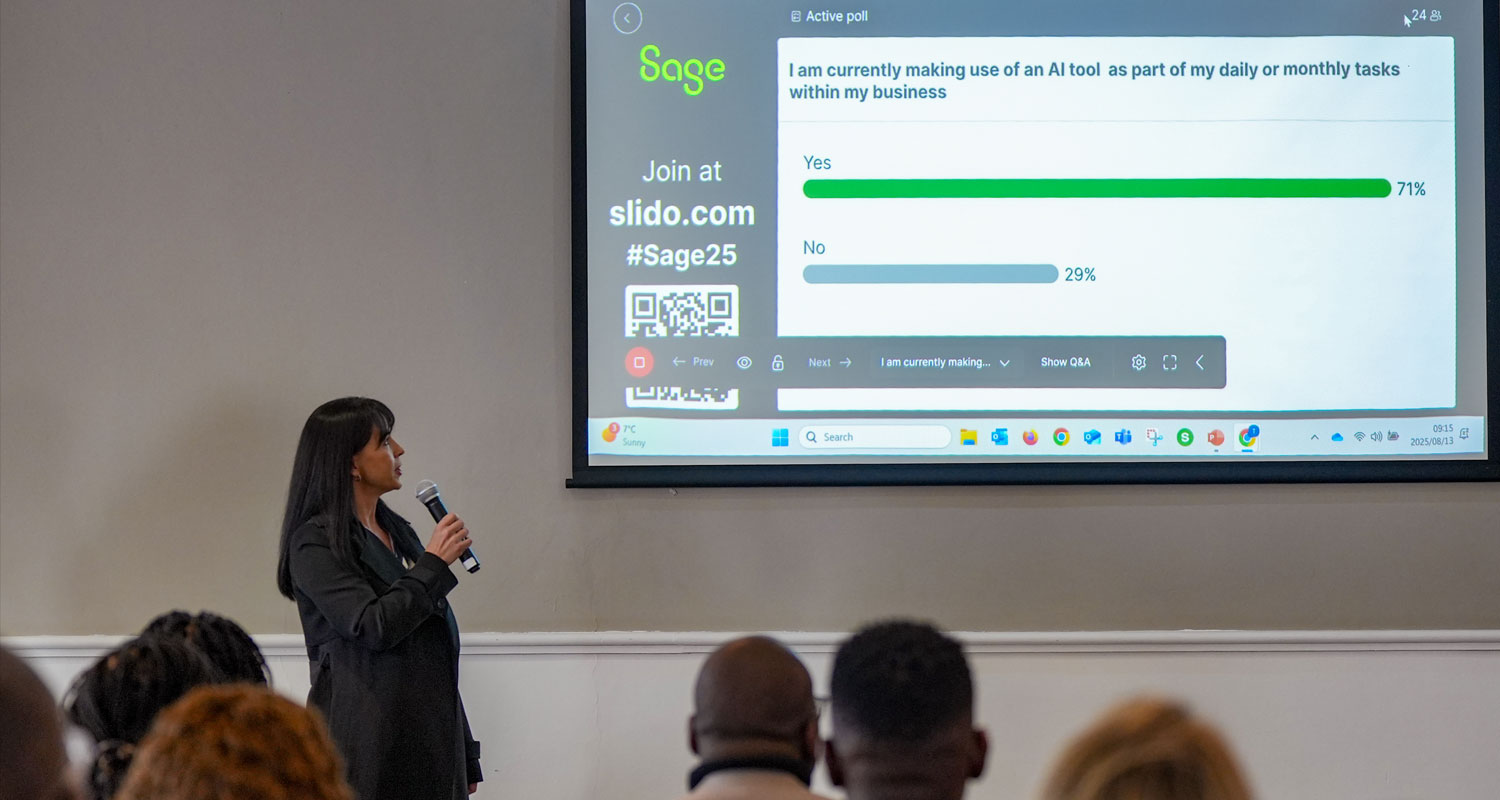Are finance teams still reporting on what happened yesterday, or are they shaping what happens next?
This was the centre of the conversation that happened at the Bryanston Country Club on 13 August 2025. Senior leaders gathered for TechCentral’s exclusive briefing, hosted with Sage. The focus? Future-fit enterprise – finance as a growth engine.
Finance steps into strategy
Across industries, the role of finance is shifting. Once defined by compliance and reporting, finance is now expected to deliver clarity, drive collaboration and accelerate decision-making. Finance teams are evolving from traditional reporting roles to strategic partners that drive growth through data, collaboration and insight.
The morning opened with this challenge. By 2026, over 70% of finance leaders will co-own enterprise strategy and transformation. That marks a fundamental change. Your finance team is no longer just reporting history – it’s shaping strategy.
For the executives in the room, the implication was direct. How do we build finance functions that not only use digital tools, but also apply data and technology to make smarter, faster decisions? How do we deliver the visibility that lets organisations navigate uncertainty, adapt at speed and grow with confidence?
Real stories, real impact
Examples brought the conversation to life:
- A manufacturing group that cut its decision cycle from 30 days to three, powered by real-time dashboards connecting finance and operations.
- An insurance company that deployed intelligent general ledger automation, freeing 40% of its finance team for strategy work.
These stories are not distant scenarios. They are happening now. The question is whether organisations are ready to follow suit.
The Sage perspective
For more than 40 years, Sage has helped businesses manage money and people with confidence. With more than 20 million employees paid through its systems, and a global network of 95 000 partners, Sage knows the realities of modern finance.
Its message at the briefing was sharp. Finance leaders are under pressure to take on digital transformation, master new technology and guide their organisations through disruption. Tools like automation and AI can help you free up time and make smarter decisions. They are the tools that free capacity, sharpen decision-making and open new possibilities.
 Since 2021, Sage has filed 17 AI patents. Sage’s approach blends generative AI with secure, reliable automation that delivers practical outcomes. Features like anomaly detection, automated accounts payable and predictive insights are built directly into the finance workflow.
Since 2021, Sage has filed 17 AI patents. Sage’s approach blends generative AI with secure, reliable automation that delivers practical outcomes. Features like anomaly detection, automated accounts payable and predictive insights are built directly into the finance workflow.
These tools help you cut down manual work, reduce errors, and focus on what matters most. Trust remains central. As Sage chief technology officer Aaron Harris reminded the audience: “It doesn’t matter how cool the product is. If customers don’t trust it, they won’t use it.”
Sage Intacct in focus
At the heart of the discussion was Sage Intacct, the cloud-native financial platform designed for professional finance teams. Born in the cloud, it offers multidimensional accounting, real-time reporting and easy integration with other business systems. Its strength lies in agility.
Multi-entity consolidation, contract management and global financial visibility allow leaders to act quickly, even in complex environments. Industries from healthcare to hospitality and software to construction rely on the system to accelerate reporting cycles and uncover strategic insights.
One of its South African customers, ATKV, reported cutting month-end reporting by up to three days. That kind of gain is not cosmetic. It changes how your teams allocate time, focus on priorities and make informed decisions.
The rise of the digital finance leader
The role of the chief financial officer is being reshaped. Today, three out of four CFOs say they hold greater accountability for digital transformation than just a few years ago. The finance leader of the future is not only fluent in balance sheets but also in data, technology and cross-functional strategy.
The skills required are changing. Finance teams must now balance traditional technical knowledge with expertise in AI, automation and data storytelling. The ability to translate insight into action across the business is becoming as important as closing the books.
For many in the room, this theme resonated strongly. Continuous learning, technology fluency and cross-functional influence are now central to finance leadership.
Collaboration beyond finance
Another strong thread in the discussion was collaboration. Finance does not exist in isolation. Its impact is amplified when connected with operations, procurement, HR and IT.
Sage Intacct makes collaboration seamless. Real-time dashboards and shared insights create a common view of performance, risks and opportunities. The result is faster alignment, clearer decisions, and stronger execution.
This collaboration is what makes finance a true growth engine. It transforms numbers into narratives, dashboards into decisions and transactions into strategy.
 Looking ahead
Looking ahead
The event was not a look back. It was a strategy session for the road to 2026. The message was that finance is no longer only about what has happened, but about what should happen next.
Automation, AI and cloud platforms are giving you the tools to step into this role with confidence. But technology alone is not enough. The mindset must shift. Finance must claim its place at the centre of enterprise leadership.
The morning ended as it began. With a challenge. Is your finance team ready to move from reporting to leading? Are you ready to move from reporting history to shaping strategy? For those in attendance, the path was becoming clearer.
Finance leaders are increasingly shaping business strategy, using technology and insight to guide decisions and drive performance. It is the future of leadership. And it is arriving faster than many expect.
Don’t miss:
Reimagining HR – predictive insights and AI are the C-suite’s untapped advantage



